Facts About Weeds
Any plant that is unwanted, out of place, or just has no discernable value can be considered a weed. Approximately 3% (8,000 of 250,000) of plant species found worldwide are classified as weeds.
Not everything that pops up in the yard is a weed. Native wildflowers and other desired plants also can readily spread and sprout. And since some of them look like common weeds, it’s important to know the difference before you automatically eliminate them.
Killing native look-alikes by mistaking them for weeds can be detrimental to the ecosystem. Some native plants provide pollen for dwindling pollinator populations, some of them provide food for caterpillars of native butterflies, and some of them serve as natural (and free) soil coverings that prevent erosion.
Eliminating the wrong plants also is a waste of time, money, and effort as well as an unnecessary use of herbicides.
Weeds and desirable plants are often confused because the most noticeable parts – the flowers – often look similar, bloom in the same color, and/or bloom at the same time. A closer look usually fleshes out the difference.
A weed flower, for example, may have a slightly different shape than a look-alike wildflower, or it may have a different number of petals, or the flowers may be arranged differently on the stems. Sometimes the flowers are so different they immediately set apart plants that look nearly identical in habit and leaf. Just be sure to eliminate a weed before its seeds have a chance to mature and drop.
A second identifier is plant leaves. One plant may have larger, wider leaves while the other may have narrower or even needle-like foliage. Or one plant might have leaves coming out opposite one another on the stems while the other has leaves alternating up the stems. Or one plant’s leaf edges might be smooth while the other’s might be “toothy” or jagged.
Other determining clues include the plant’s growth habit (spreading, bushy, upright), where the plant is growing (sun vs. shade, wet vs. dry, disturbed vs. undisturbed soil), how fast or aggressively a plant is growing, and what the plant looks like underground (roots, runners, or bulblets).
Here are six common spring weeds and how to tell them apart from similar native plants:
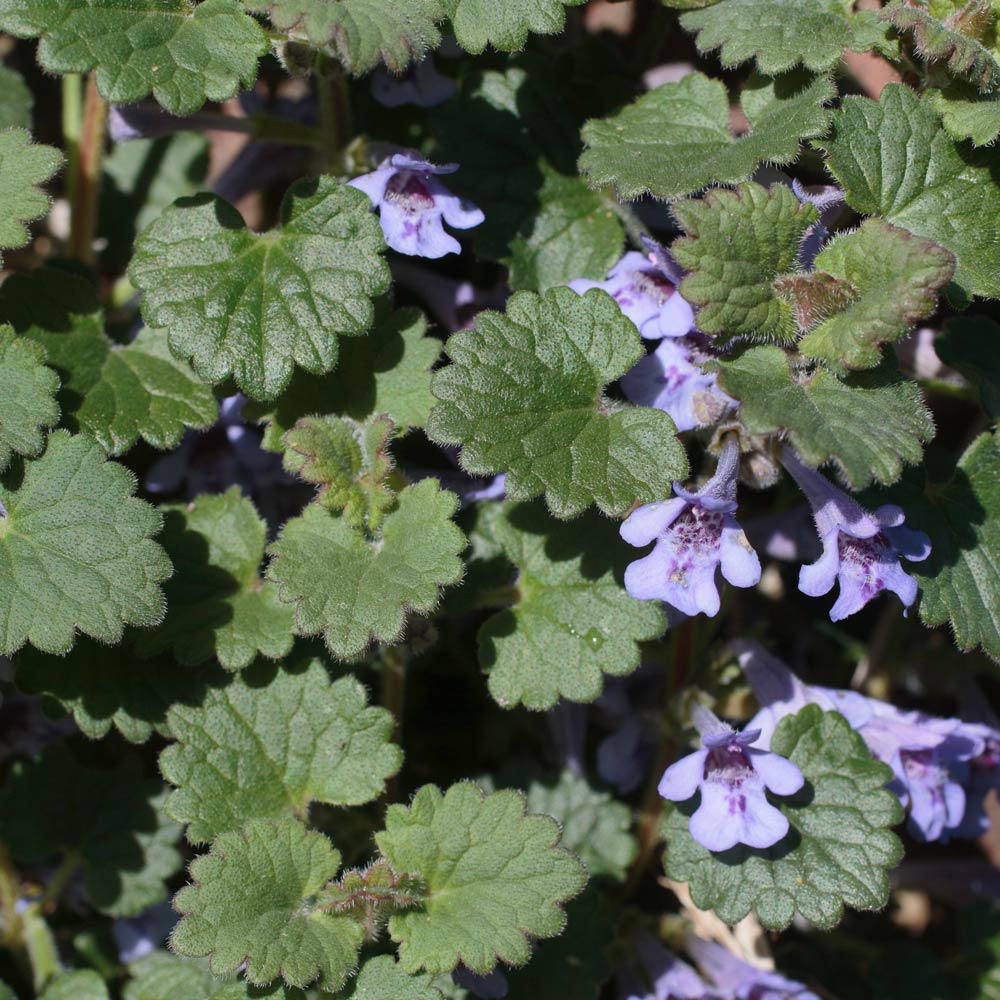
Creeping charlie (Glechoma hederacea)
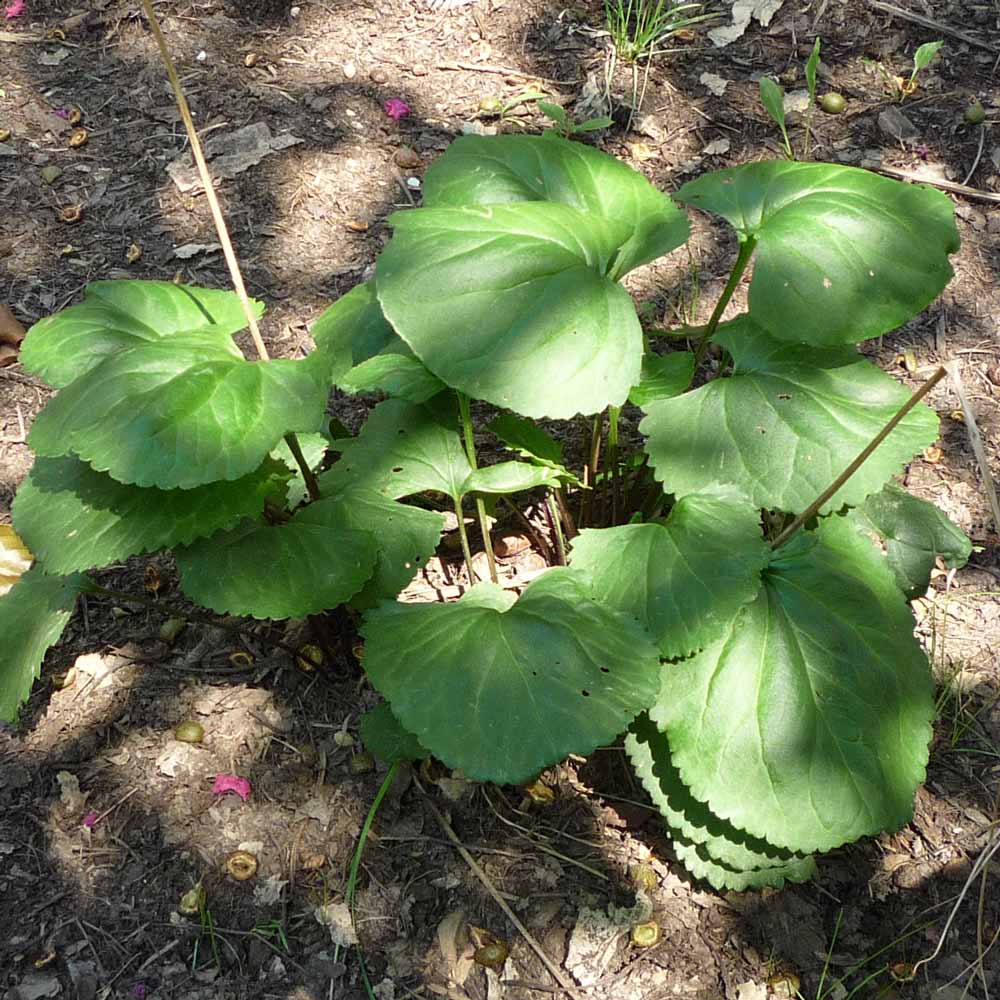
Golden ragwort (Packera aurea) leaves
Creeping charlie (Glechoma hederacea) vs. golden ragwort (Packera aurea). These two ground-huggers have similar heart-shaped foliage, but the flowers quickly differentiate them.
The weedy creeping charlie produces close-to-the-stem lavender flowers while the native golden ragwort produces golden daisy-like flowers.
Creeping charlie also has scalloped leaf edges and a mint-like odor when crushed, while golden ragwort’s leaves are toothed.
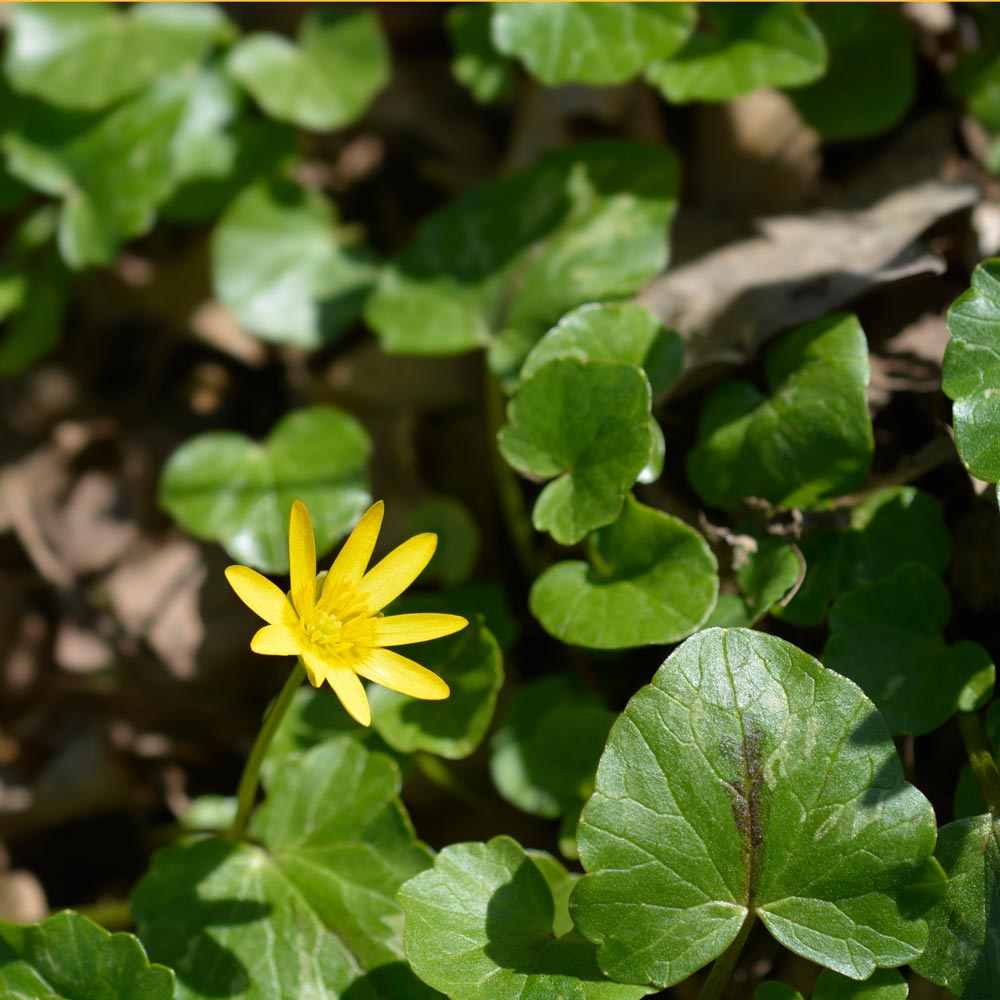
Lesser celandine (Ranunculus ficaria)
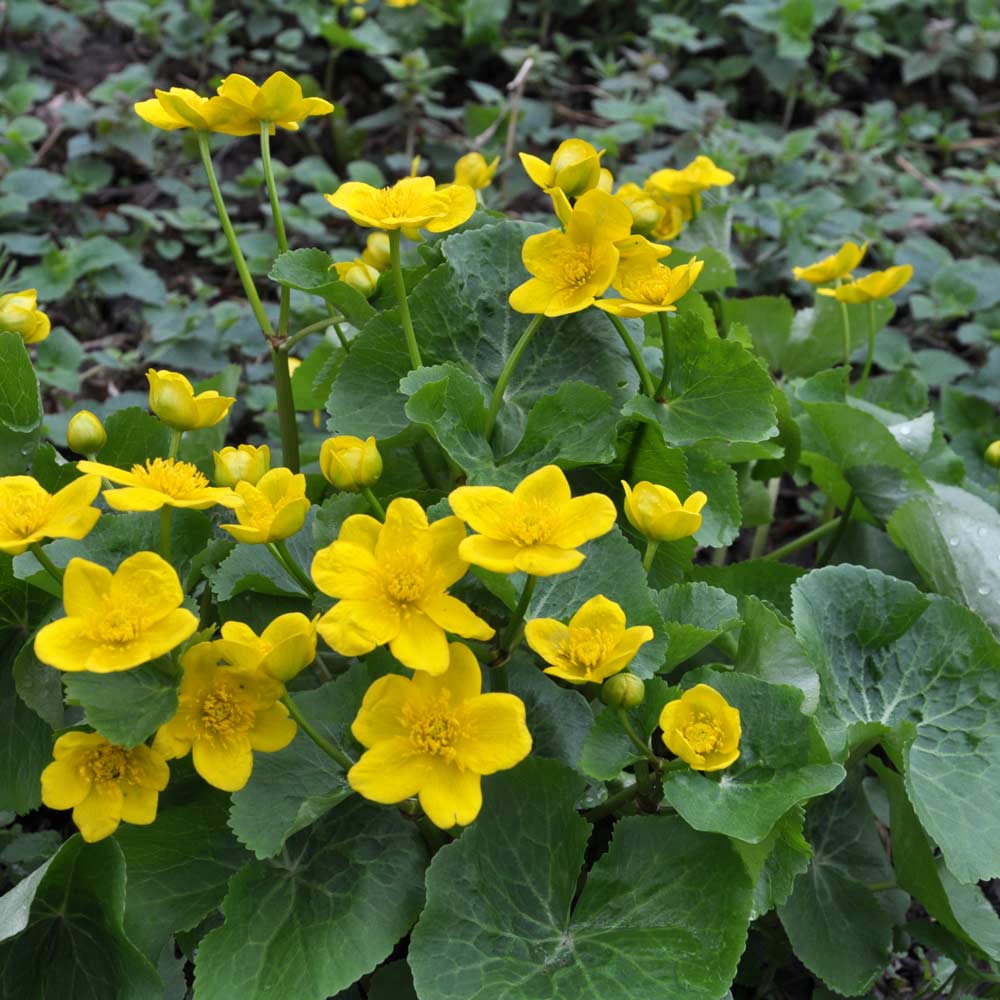
Marsh marigold (Caltha palustris)
Lesser celandine (Ranunculus ficaria) vs. marsh marigold (Caltha palustris). Both of these flower yellow in early spring, grow in moist habitats, and have similar heart-shaped leaves.
The tell-tale difference is that when you dig up lesser celandine (an invasive in more than 20 U.S. states) you’ll find cream-colored bulblets and roots with finger-like tubers. Native marsh marigolds have no bulblets and fibrous roots.
Lesser celandine also is sometimes confused with native wood poppies. The distinction is the yellowish-orange sap that comes out of wood-poppy stems.
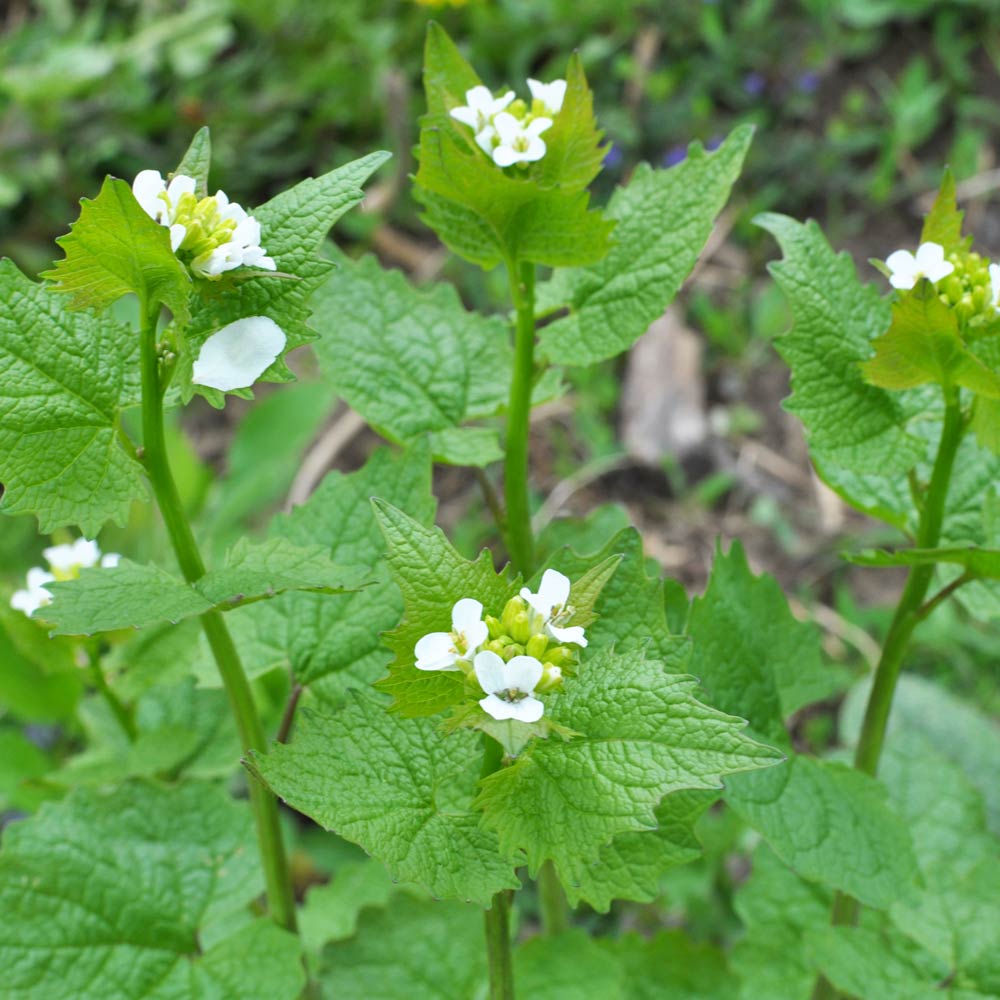
Garlic mustard (Alliaria petiolata)
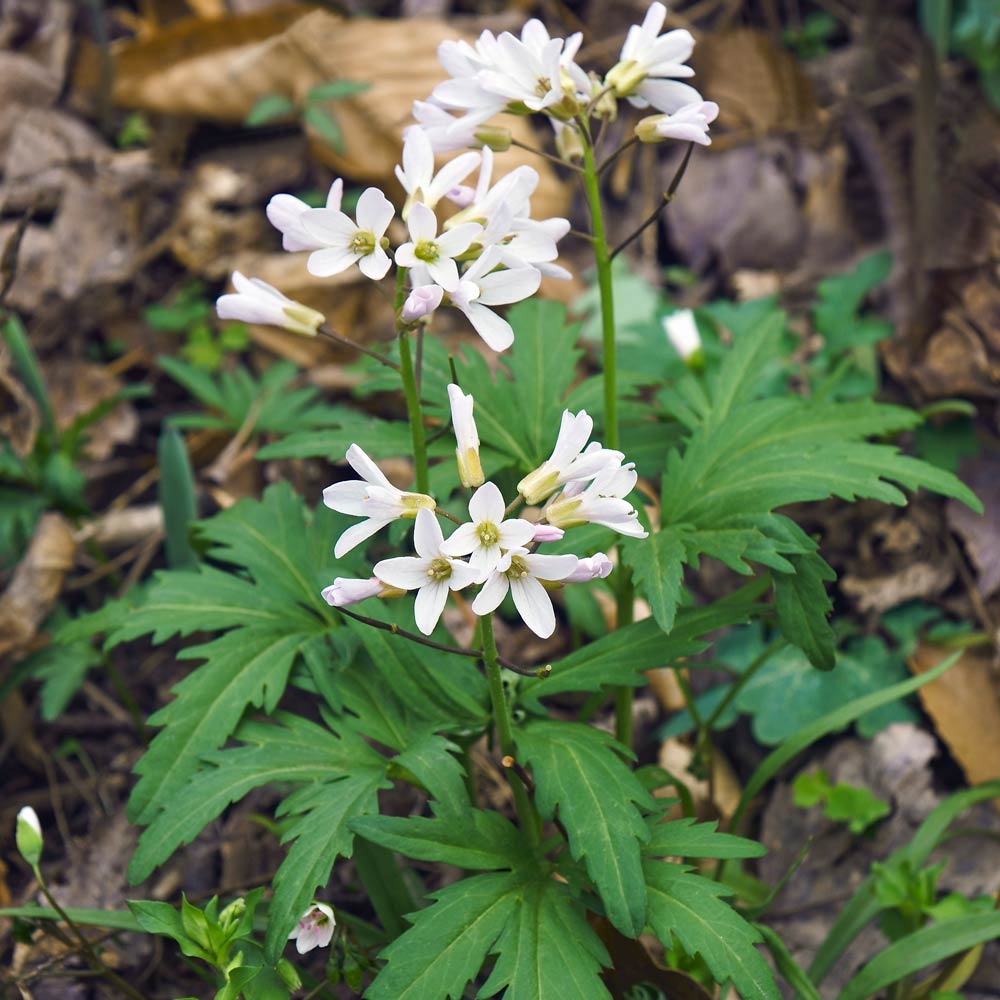
Cut-leaved toothwort (Cardamine concatenata)
Garlic mustard (Alliaria petiolata) vs. cut-leaved toothwort (Cardamine concatenata). Both of these produce clusters of small white flowers in spring. A key difference is that the weedy garlic mustard has triangular, wrinkled leaves and a garlic odor when its leaves are crushed. Native cut-leaved toothwort has narrower leaves and no garlic odor.
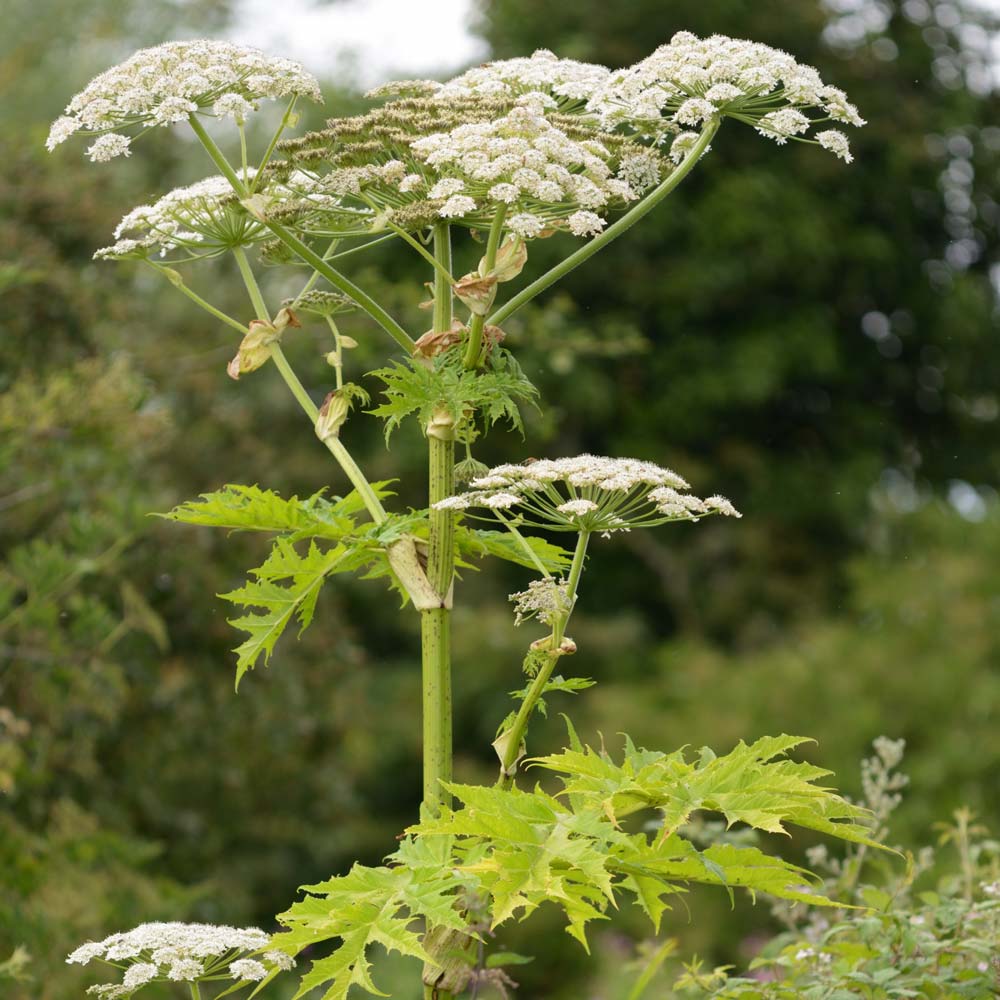
Giant hogweed (Heracleum mantegazzianum)
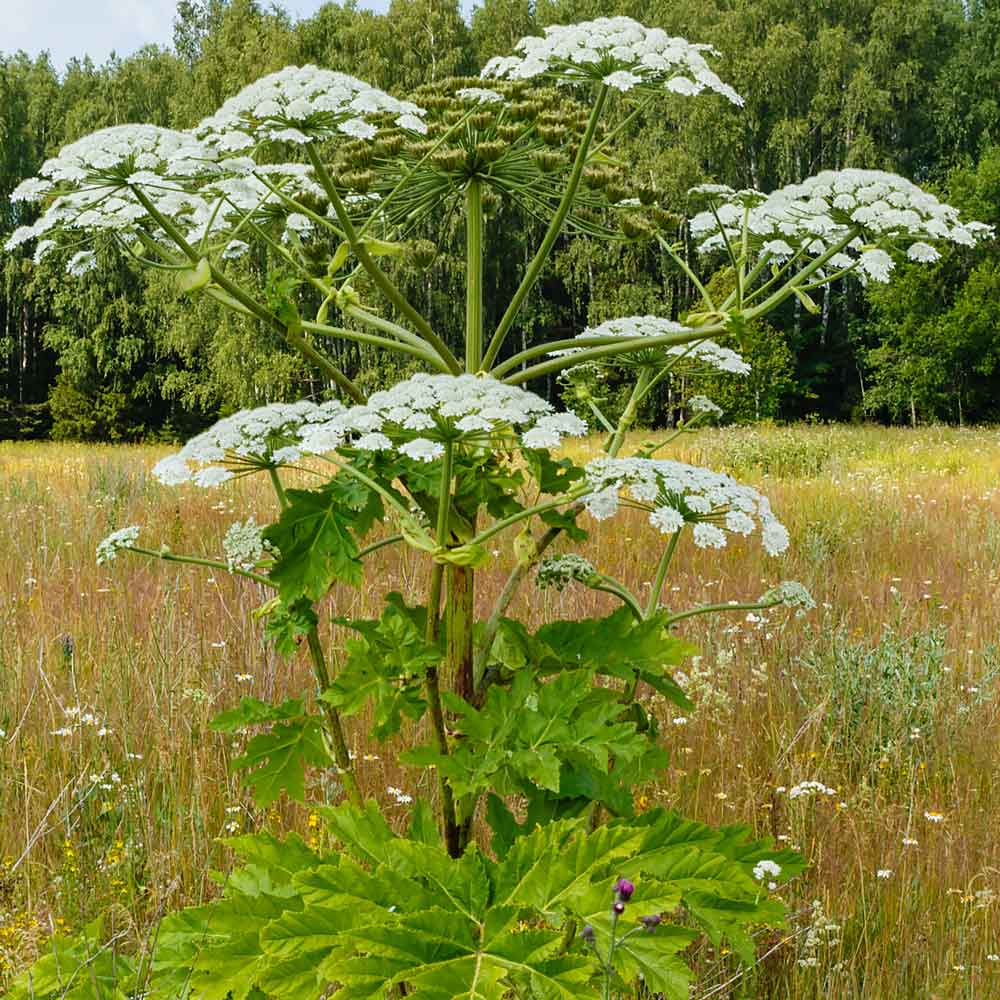
Cow parsnip (Heracleum maximum)
Giant hogweed (Heracleum mantegazzianum) vs. cow parsnip (Heracleum maximum). These are both large, toothy-leafed members of the carrot family that produce umbrella-like clusters of white flowers in mid to late spring. The weedy and rash-causing giant hogweed has distinctive purple spots on its stems (native cow parsnip does not), the plant is much larger overall and its flower clusters are fuller and bigger than cow parsnip. Giant hogweed can grow to 14 feet tall and its leaves can span five feet with lobes that are deeply incised. Cow parsnip grows to about 7 feet and its leaves are half the size of giant hogweed with more rounded lobes.
Giant hogweed is a hazardous, federally listed noxious weed. Its sap contains phototoxic chemicals. If the sap comes into contact with your skin and then is exposed to sunlight, it can cause severe skin irritation including painful, burning blisters and long-lasting scars. If the plant touches your skin, immediately wash the area with soap and water and protect from sunlight for 48 hours. This plant can also displace native plants. Native cow parsnip is less toxic, but it can still cause a rash or burn. Use caution around either plant.
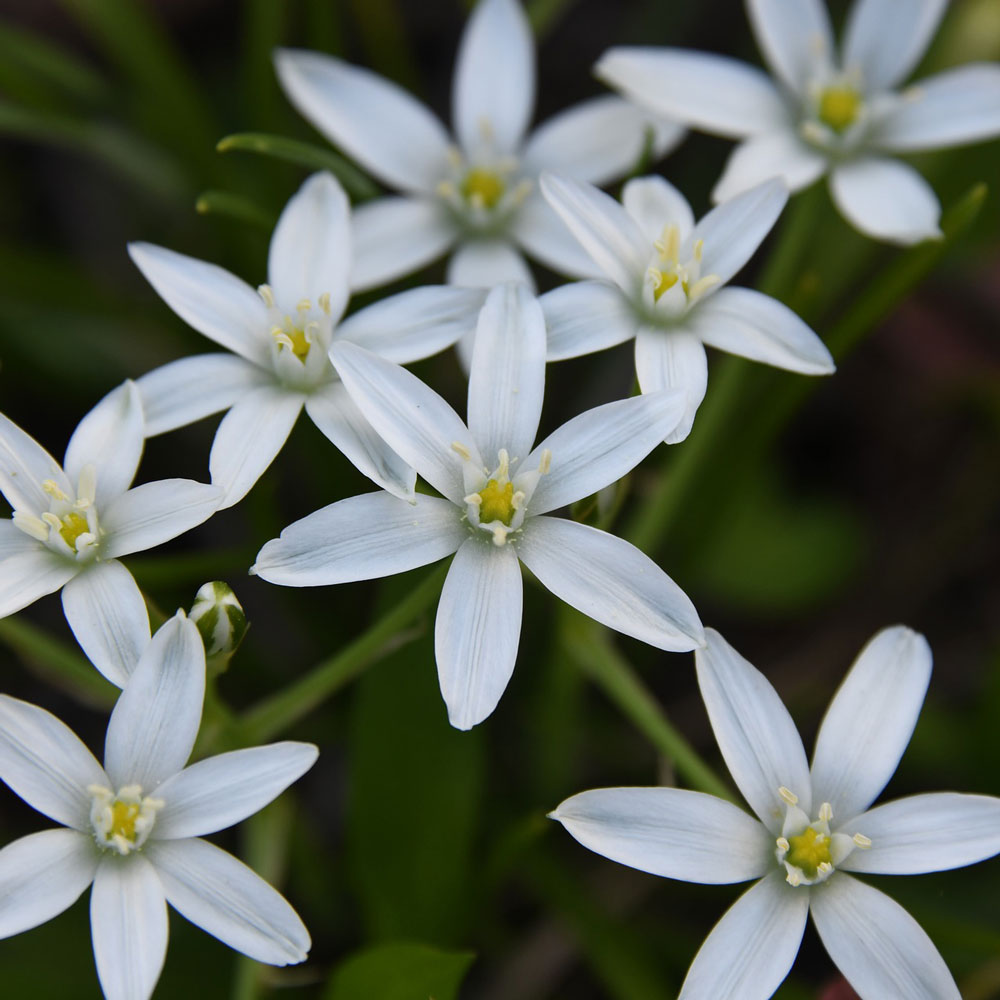
Star of Bethlehem (Ornithogalum umbellatum)
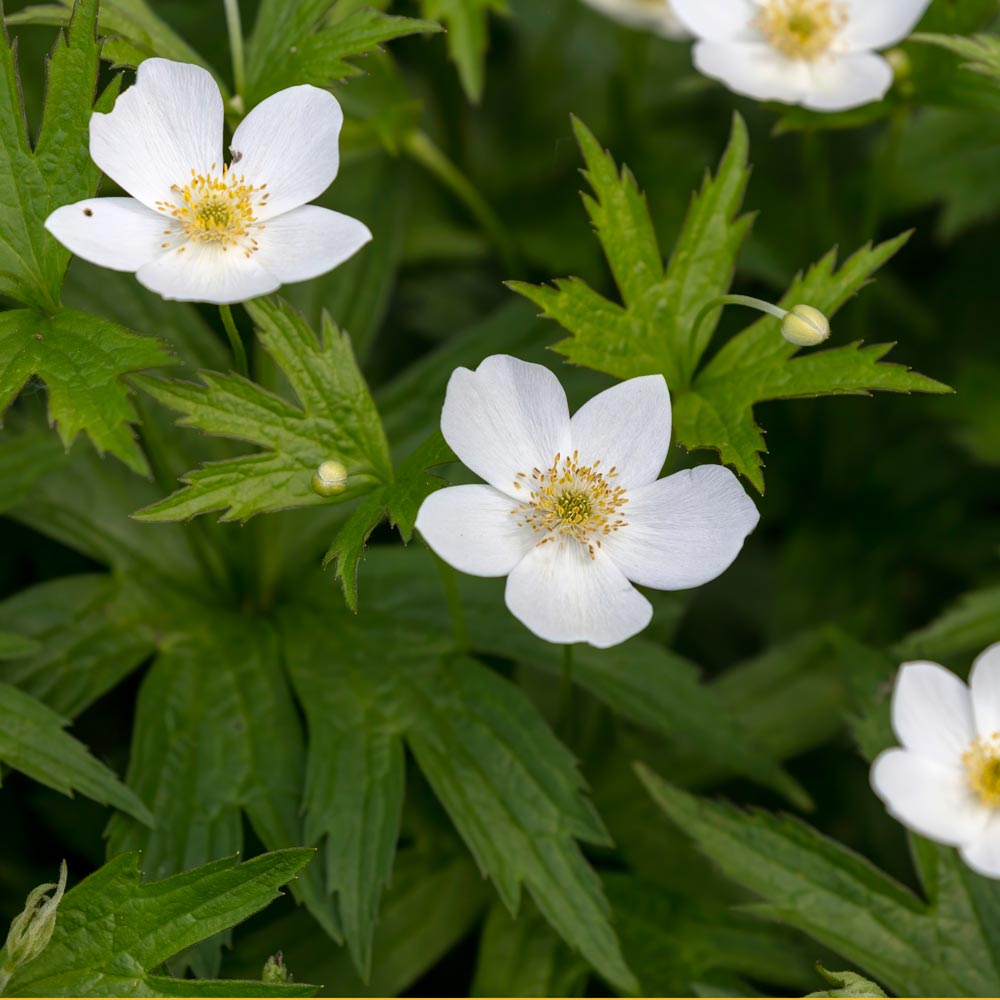
Wood anemone (Anemone quinquefolia)
Star of Bethlehem (Ornithogalum umbellatum) vs. wood anemone (Anemone quinquefolia). Both of these produce star-shaped white flowers in early to mid-spring. A key difference is that the weedy star of Bethlehem has narrow, grass-like foliage while native wood anemones have wider leaves with toothy edges.
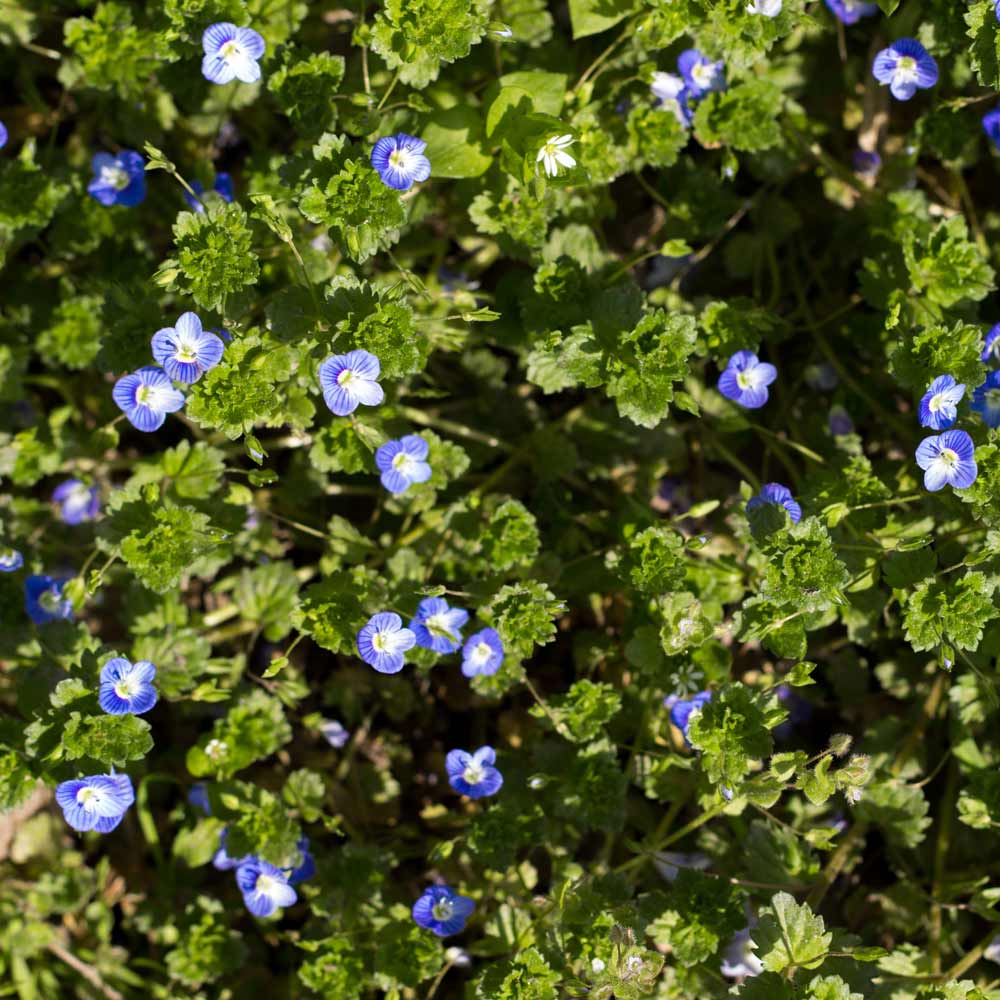
Creeping speedwell (Veronica filiformis)
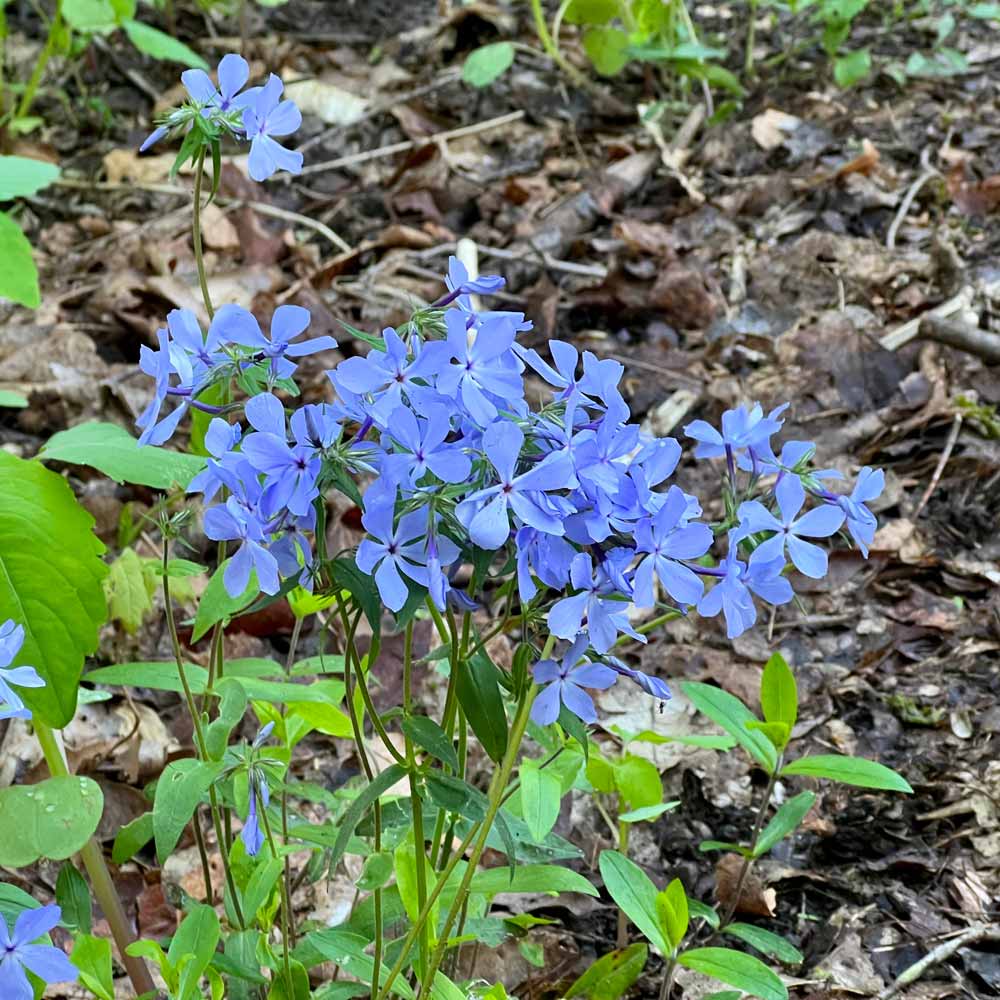
Woodland phlox (Phlox divaricata)
Creeping speedwell (Veronica filiformis) vs. woodland phlox (Phlox divaricata). Both of these are short, spreading perennials with blue flowers in April and May. The difference is that weedy creeping speedwell has a creeping habit with rounded leaves that alternate up its stems, while the native woodland phlox (also known as creeping phlox and blue phlox) grows in a clump-like habit and has narrower leaves that are opposite one another on the stems.
Read how to control and prevent different kinds of weeds.
Numerous phone apps are available to help identify snapshots of plants in question (Seek by iNaturalist, PlantSnap, NatureID, LeafSnap, and PictureThis, to name a few).
A variety of online weed-identification websites also give pictures and descriptions of common weeds, such as Preen’s Weed ID and sites run by Cornell and Rutgers universities.
Numerous books and weed field guides also can help sort out ways to identify weeds by key features. The best ones are regional and focus on weeds common to different parts of the country.
The U.S. Department of Agriculture’s National Invasive Species Information Center website lists many other weed-identification and native-plant resources.